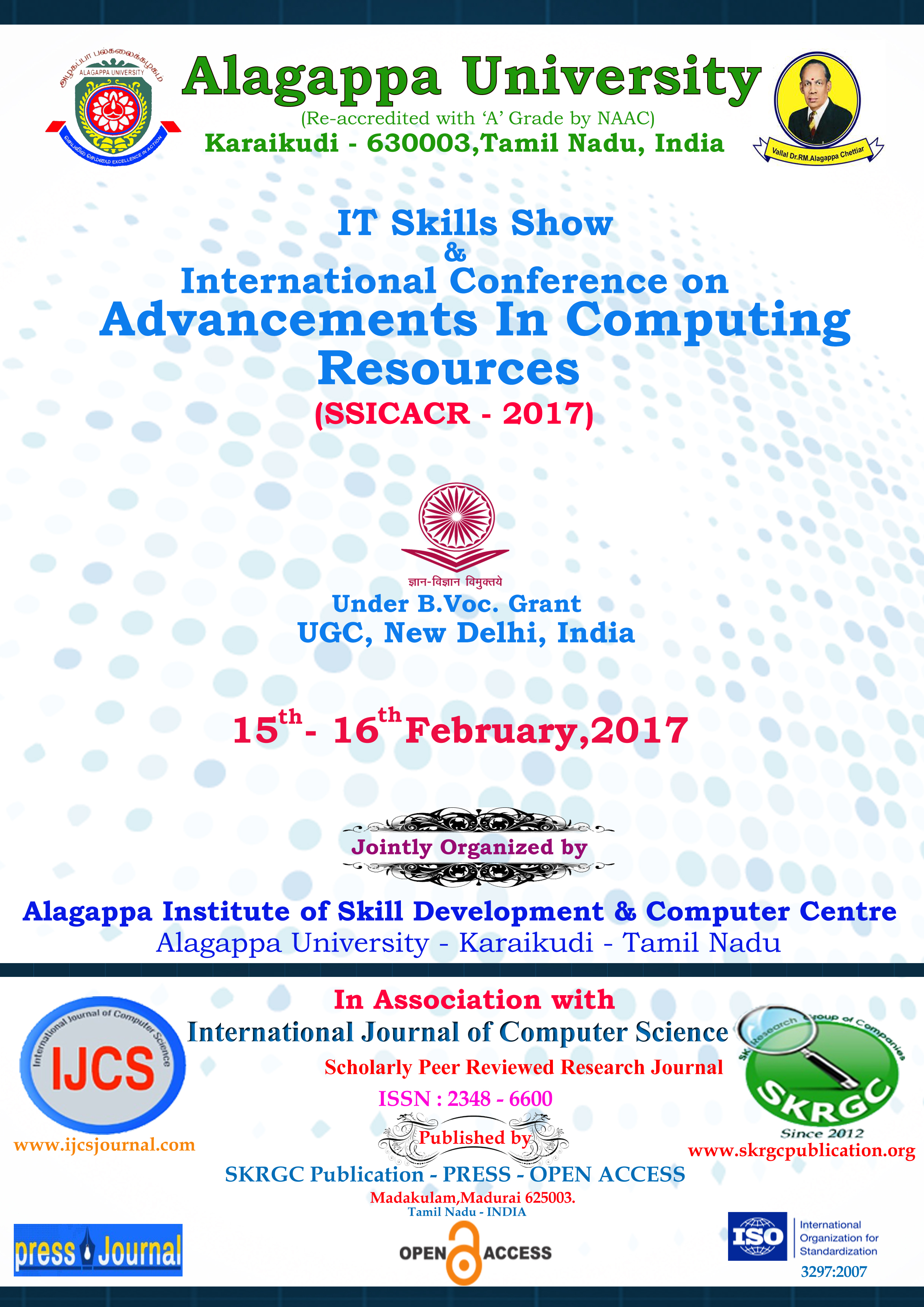Exploring Key Aspects of Computational Thinking
IT Skills Show & International Conference on Advancements in Computing Resources, (SSICACR-2017) 15 and 16 February 2017, Alagappa University, Karaikudi, Tamil Nadu, India. International Journal of Computer Science (IJCS) Published by SK Research Group of Companies (SKRGC)
Download this PDF format
Abstract
Computational Thinking is a collection of diverse skills to do with problem solving which results from the nature of computation. It involves specific problem solving skills such as the ability to think logically, algorithmically and recursively. Computational thinking is a fundamental skill for everyone, not only for computer scientists. We should add computational thinking to every child‘s analytical ability. Computational thinking involves solving problems, designing systems, and understanding human behaviour, by drawing on the concepts fundamental to computer science. This paper describes the four key aspects of computational thinking that includes decomposition, pattern recognition, abstraction and algorithms in detail. It talks about why algorithms created through computational thinking need to be evaluated. It also describes a technique called dry run which is used to evaluate solutions before programming. This term has been much discussed amongst educationalists all over the world to grips with a new computing curriculum designed to equip students with such skills, and to reduce the skills gap between education and the workplace.
References
[1] Jeffy Krameris, " Abstraction The Key To Computing?", Communications of the ACM, April 2007/Vol. 50, No. 4.
[2] Alan Bundy, " Computational Thinking Is Pervasive", Journal Of Scientific and Practical Computing, Vol. 1, No. 2 (2007) 67–69.
[3] Vincent Conitzer, "Making Decisions Based on the Preferences of Multiple Agents", communications of the ACM, march 2010, vol. 53, no. 3. doi:10.1145/1666420.1666442.
[4] James J. Lu, George H. L. Fletcher, " Thinking About Computational Thinking", SIGCSE‘09, March 3–7, 2009, Chattanooga, Tennessee, USA. Copyright 2009 ACM 978-1-60558-183-5/09/03.
[5] H. Abelson and G. J. Sussman. Structure and Interpretation of Computer Programs, 2nd ed. MIT Press, Cambridge, 1996.
[6] J. L. Bates and R. L. Constable. Proofs as programs. ACM Trans. Program. Lang. Syst. 7(1):113-136, 1985.
[7] L. Carter. Why students with an apparent aptitude for computer science don‘t choose to major in computer science. SIGCSE 2006, Houston, pp. 27-31.
[8] A. Cohen and B. Haberman. Computer science: a language of technology. SIGCSE inroads 39(4):65-69, 2007.
[9] M. Guzdial. Paving the way for computational thinking. CACM 51(8):25-27, 2008. [8] S. Reges. The mystery of ?b := (b = false).? SIGCSE 2008, Portland, pp. 21-25.
[10] J. M. Wing. Computational thinking. CACM 49(3):33-35, 2006.
Keywords
Problem Solving, Analytical Ability, Abstraction, Decomposition, Pattern Recognition, Algorithms, Dry Run.

